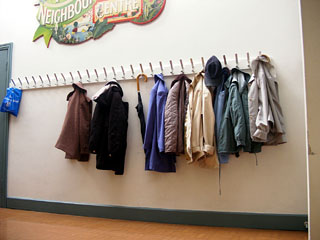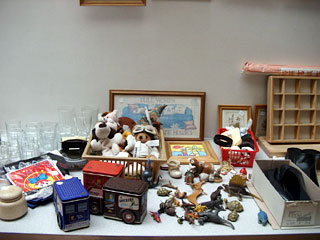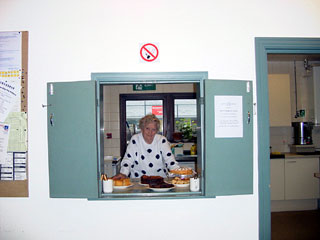|
A Table of Contents:
5-3-0 Preface
The Grove Neighbourhood Centre in Hammersmith, London: Successful Achievement of Forgotten Urban Community Development in the 1970s
5-3-1 Introduction 5-3-2 An Outline of the Grove Neighbour Centre 5-3-3 Community Centre in Urban Spaces- Do They Lack A Local Communities? 5-3-4 An Experiment of Community Development in Urban Cities in the 1970s 5-3-5 Success of Forgotten Development Project 5-3-6 Conclution 5-3-2 An Outline of the Grove Neighbour Centre
The Grove Neighbourhood Centre was established in 1973 in the old Grove Ward.1 The old Grove Ward was in the westernmost inner London Borough of Hammersmith and Fulham.2 Currently it is an incorporated organisation called Grove Neighbourhood Centre Limited and has been registered as a charitable organisation.
The Grove Ward was formerly a working class area and one of the poorest inner London wards in the 1970s.3 As I mentioned earlier, the Hammersmith Community Development Project had worked with the people of the Grove before they organised the Grove Neighbourhood Council in 1973 and held the first election. The Grove Neighbourhood Centre moved to its present address in 1979. By permission of the Borough of Hammersmith, the Centre used prefabricated houses built on a site where the housing had been destroyed by an air raid during World War 2. The Centre received grants from the local government and private organisations to build a brand new one-storied centre in 1982, later extended to a two-storied building in 1994.
The attractive building with gently curved roof won the Hammersmith Societyfs
Annual Environment Award in 1995, for local buildings displaying imaginative
design. On the ground floor there is a reception area, a hall4,
a kitchen, and rest rooms. On the first floor there is a hall, the Grove Neighbourhood
Centre office and three other rooms that are rented out. Three therapists (Body
Talk, Acupressure, and Counselling) rent the three rooms respectively at present
in 2003. The opening hours of the Centre are 9:30 to 16:30, Monday to Friday
and halls are available on the weekend with the reservation.
The Grove Neighbourhood Council manages the Centre. The Council consists of up
to twenty councillors. A committee meeting to conduct its business is held
on the second Wednesday of every month in the evening. The chairperson, the
vice-chairperson, secretary, treasurer, other councillors, and two full-time
staff, who are employed by the Centre, attend the meeting. In gThe Grove Neighbourhood
Council Constitutionh (revised in 1995), activity objects are described as
follows (2. Objects):
(a) To promote the benefit of the inhabitants of the area without distinction of age, sex, race, or political or religious or other opinions, by assisting the statutory authorities, voluntary organisations, institutions and businesses in a common effort to advance education and provide facilities, in the interests of social welfare, for health, recreation and leisure time occupations, and to foster a community spirit for the advancement of those objects and for any other charitable purpose. (b) To establish or secure the establishment of a centre or centres, and to maintain and manage or to cooperate with any statutory authority or authorities or voluntary organisations in the maintenance or management of such centres, for the furtherance of the above objects. (c) To represent local people on any matter which concerns the local community. (d) To promote a widespread and well-informed interest in local affairs.
Financial management of the Centre is paid for by grants from the local government and private organisations, rent from the halls and three rooms on the first floor and profits from events organised by the Centre5.
The Grove Neighbourhood Centre offers three major activities for residents. Firstly, the Centre organises events on site where residents can meet and socialise. Secondly, the Centre rents the halls to promote the activities of the residents. Thirdly, the Centre links local people through voluntary activities.
The Centre regularly organises several events. Every week or every month, the Centre has afternoon teas, meals, gatherings for games, seasonal fetes@(spring, summer and Christmas), social gatherings, picnics, and so forth. Residents bring disused clothes, daily necessities, toys, and books to the Centre where these items are sold at jumble sales and the other events. The Centre not only creates an opportunity for meeting other neighbours face to face, but also links the area through an exchange of goods.
 Near the entrance of the hall, May 2002  A pile of used clothes in a Jumble Sale, February 2002  A small bazaar, April 2002  An afternoon tea, April 2002
Many residents visit the Grove Neighbourhood Centre, and various activities
are held in the rented space by local groups. There are regular classes and
events (fitness, yoga, pilates, dance, cooking, handicraft, painting, bingo-club,
a social gathering for Iraqis, etc.), childcare support (a group of parents
with infants hire a play-leader to play with infants and parents socialise),
counselling or regular group meetings (concerning alcoholism, addiction to
gambling, domestic violence, terminal care, etc.), or workshops (massage, meditation,
Reiki, clairvoyance, healing-sound, etc.). Every Thursday evening, the Borough
Councillors for the Ward are available to meet local residents for informal
discussions at the Centre. Moreover, the Centrefs halls are utilised for individual
events such as a birthday party for children. It is an important task for the
staff to support residentsf activities, take reservations for halls, and coordinate
schedules.
The Centre also organises the Grove Good Neighbours Project. The Centre calls for clients and volunteers from the local area to carry out life-style support activities (gardening, shopping, attendant for a walk, pick-up service, a companion to talk to, etc.) in order to meet the demands of each client. At present in August 2003, there are fifteen clients and thirteen volunteers registered with the project. The Grove Neighbourhood Centre and the Council have been developing activities rooted in local areas to promote and maximise welfare benefits for local residents in accordance with the constitution. However, no particular local community support for the activities of the Centre can be found within as such the geographical areas outlined in the council constitution. The Grove Ward does not have a practical meaning for the present residents.
1 London consists of a number of administrative areas including the City of London and 32 other London Boroughs. Each administrative area has an assembly and an executive organ. This essay deals with the London Borough of Hammersmith and Fulham and its Borough Council. The borough is adjacent to the River Thames on the south, Brent on the north, Kensington and Chelsea on the east, and Ealing and Hounslow on the west. This Borough is divided into two areas, Hammersmith and Fulham, each with an individual Town Hall. Hammersmith, Fulham, and Shepherdfs Bush are the major town centres. Hammersmith is very convenient for travel inside London and to get to Heathrow Airport; it is one of the intermediate stations on the Piccadilly and District Lines, the starting station for the Hammersmith and City Line, and a bus terminal. There is the station of Central Line in Shepherdfs Bushe. Due to recent redevelopment, facilities such as shops, restaurants, commercial buildings, hotels, sports facilities, art centres, the BBC Television Centre, theatres, and cinemas are easily accessible by public transport in the area.
2 A ward, an administrative area, is the lowest unit of a borough. Due to the modification of administrative areas in the Hammersmith and Fulham Borough in May 2002, the Grove Neighbourhood Centre is currently in the Ravenscourt Park Ward. (Described later) 3 In an administrative report dated the 17th July 1973, according to the 1971 Census, the Grove Ward is one of the thirty six poorest inner London wards which qualified for preferential treatment. 4 The Lower Hall (ground floor) is approx. 12metres~6metres, with a varnished wood, and sliding doors opening onto a small patio. The Upper Hall (first floor) is approx. 11metres~5metres, with a carpeted floor. The rent of the hall for regular hire (e.g. Weekly groups) is 6 pounds per hour. For occasional hire, 15 pounds per hour (10 pounds for charities) and 60 pounds per day, at present in August 2004. 5 The income of the Grove Neighbourhood Centre in the 2003 financial year come from the following sources; 30.0% from Hammersmith and Fulham Council, to cover a portion of the staff costs of its general activities; and 16.25% from the Community Fund (formerly the National Lottery Charities Boards) for Good Grove Neighbourhood Project and 53.75% from rents and by fund-raising; jumble sales and other events. The amount of the Hammersmith and Fulham grant has declined, in comparison with earlier years. 6 According to the Grove Neighbourhood Centre Monitoring & User Profile (dated on 22nd March 2003), for instance, the total number of visitors from 8th March to 22nd 2003 was 1,386 of whom 90% were residents of the Hammersmith and Fulham Borough, 956 were female, and 900 were Older People. This gOlder Peopleh category is not strictly researched by the Centre; it is an estimated number of retired people aged over 60. By ethnicity, there are Asian 56, Chinese 4, Japanese 24, Black Caribbean 102, Black African 64, Black Other 89, Mixed Race 103, White Irish 186, White English 572, White Other 186. |